Do you have a question about the Whirlpool LBR5232EQ0 and is the answer not in the manual?
Step-by-step guide on how to begin operating the washing machine.
Instructions on how to pause, stop, and restart the washing machine during a cycle.
Guidance on choosing the appropriate wash cycle, duration, and water temperature.
Details the features and usage of the Normal wash cycle for different fabric types.
Explains how to select different wash times and water temperatures for various cycles.
Instructions for using an extra rinse and spin cycle for heavily soiled clothes.
Guidance on using the drain and spin cycle to remove excess water from fabrics.
Details the Normal cycle for cotton/linen fabrics on 2-speed, 4-cycle models.
Information on the Permanent Press cycle for reducing wrinkles on synthetics.
Guide for the Short/Knits cycle for delicate items and lightly soiled knits.
How to select wash time and temperature for 2-speed, 4-cycle washer models.
Details the Normal cycle for cotton/linen fabrics on 2-speed, 5-cycle models.
Information on the Permanent Press cycle for synthetics on 2-speed, 5-cycle models.
Guide for the Knits/Gentle cycle for delicate items on 2-speed, 5-cycle models.
How to select wash time and temperature for 2-speed, 5-cycle washer models.
Instructions for extra rinse and spin on 2-speed models.
Guidance for drain and spin cycle on 2-speed models.
Explanation of the self-cleaning lint filter system in some washer models.
Explains the sequence of events and pauses during different wash cycles.
Describes common sounds made by the washer and their causes.
Instructions on how to safely add liquid chlorine bleach to the wash cycle.
Guidance on diluting and adding fabric softener during the final rinse.
Instructions for cleaning the exterior and interior of the washing machine.
Steps for winterizing the washer to prevent freezing damage during storage.
Recommendations for washer care during extended periods of non-use or vacation.
Tips on preparing clothes, such as closing zippers and emptying pockets.
Guidance on sorting clothes by soil level, color, fabric, and lint shedding.
Advice on properly loading the washer to ensure effective cleaning and prevent issues.
Recommended load sizes for different types of garments and washer capacities.
Recommendations for selecting water temperatures based on fabric types and soil levels.
Instructions on how to check the hot water temperature for optimal washing.
Information on water hardness and its effect on washing performance.
Tips for conserving energy while operating the washing machine.
General washing instructions for specific items like blankets, diapers, and knits.
General guidelines and precautions for effective stain removal from fabrics.
Specific methods for removing common stains from clothing.
Methods for removing deodorant and antiperspirant stains from clothing.
Techniques for removing fat, grease, and oil stains from fabrics.
Instructions for removing fresh and old fruit stains from laundry.
How to remove grass and green vegetable stains from fabrics.
Methods for removing ink and ballpoint pen ink stains.
Guidance for removing iron and rust stains from colored or white fabrics.
How to remove ketchup and tomato product stains from clothes.
Techniques for removing lipstick stains using fabric cleaner or detergent.
Methods for removing meat juice and egg stains from laundry.
How to remove mildew stains and prevent their formation.
Steps to remove mustard stains using fabric cleaner, detergent, and vinegar.
Guidance for removing water-based and oil-based paint stains.
How to remove perspiration stains and discoloration from fabrics.
Methods for treating scorch marks, noting severe scorch is permanent.
How to remove soft drink stains using cold water and alcohol.
Identifies common laundry issues and their potential causes.
Checks to perform before calling for service on common washer issues.
Contact information and steps for getting help or operational advice.
How to find authorized service companies and procedures for requesting repairs.
Information on obtaining genuine FSP® replacement parts for the appliance.
Steps for contacting consumer action programs if issues are not resolved.
Step-by-step guide on how to begin operating the washing machine.
Instructions on how to pause, stop, and restart the washing machine during a cycle.
Guidance on choosing the appropriate wash cycle, duration, and water temperature.
Details the features and usage of the Normal wash cycle for different fabric types.
Explains how to select different wash times and water temperatures for various cycles.
Instructions for using an extra rinse and spin cycle for heavily soiled clothes.
Guidance on using the drain and spin cycle to remove excess water from fabrics.
Details the Normal cycle for cotton/linen fabrics on 2-speed, 4-cycle models.
Information on the Permanent Press cycle for reducing wrinkles on synthetics.
Guide for the Short/Knits cycle for delicate items and lightly soiled knits.
How to select wash time and temperature for 2-speed, 4-cycle washer models.
Details the Normal cycle for cotton/linen fabrics on 2-speed, 5-cycle models.
Information on the Permanent Press cycle for synthetics on 2-speed, 5-cycle models.
Guide for the Knits/Gentle cycle for delicate items on 2-speed, 5-cycle models.
How to select wash time and temperature for 2-speed, 5-cycle washer models.
Instructions for extra rinse and spin on 2-speed models.
Guidance for drain and spin cycle on 2-speed models.
Explanation of the self-cleaning lint filter system in some washer models.
Explains the sequence of events and pauses during different wash cycles.
Describes common sounds made by the washer and their causes.
Instructions on how to safely add liquid chlorine bleach to the wash cycle.
Guidance on diluting and adding fabric softener during the final rinse.
Instructions for cleaning the exterior and interior of the washing machine.
Steps for winterizing the washer to prevent freezing damage during storage.
Recommendations for washer care during extended periods of non-use or vacation.
Tips on preparing clothes, such as closing zippers and emptying pockets.
Guidance on sorting clothes by soil level, color, fabric, and lint shedding.
Advice on properly loading the washer to ensure effective cleaning and prevent issues.
Recommended load sizes for different types of garments and washer capacities.
Recommendations for selecting water temperatures based on fabric types and soil levels.
Instructions on how to check the hot water temperature for optimal washing.
Information on water hardness and its effect on washing performance.
Tips for conserving energy while operating the washing machine.
General washing instructions for specific items like blankets, diapers, and knits.
General guidelines and precautions for effective stain removal from fabrics.
Specific methods for removing common stains from clothing.
Methods for removing deodorant and antiperspirant stains from clothing.
Techniques for removing fat, grease, and oil stains from fabrics.
Instructions for removing fresh and old fruit stains from laundry.
How to remove grass and green vegetable stains from fabrics.
Methods for removing ink and ballpoint pen ink stains.
Guidance for removing iron and rust stains from colored or white fabrics.
How to remove ketchup and tomato product stains from clothes.
Techniques for removing lipstick stains using fabric cleaner or detergent.
Methods for removing meat juice and egg stains from laundry.
How to remove mildew stains and prevent their formation.
Steps to remove mustard stains using fabric cleaner, detergent, and vinegar.
Guidance for removing water-based and oil-based paint stains.
How to remove perspiration stains and discoloration from fabrics.
Methods for treating scorch marks, noting severe scorch is permanent.
How to remove soft drink stains using cold water and alcohol.
Identifies common laundry issues and their potential causes.
Checks to perform before calling for service on common washer issues.
Contact information and steps for getting help or operational advice.
How to find authorized service companies and procedures for requesting repairs.
Information on obtaining genuine FSP® replacement parts for the appliance.
Steps for contacting consumer action programs if issues are not resolved.
| Brand | Whirlpool |
|---|---|
| Model | LBR5232EQ0 |
| Type | Top Load Washer |
| Capacity | 3.2 cu. ft. |
| Color | White |
| Energy Star Certified | No |
| Agitator | Yes |
| Water Level Settings | 4 |
| Delay Wash Option | No |
| Quick Wash Option | Yes |
| Voltage | 120 V |
| Frequency | 60 Hz |
| Spin Speed | 700 RPM |
| Width | 27 in |
| Depth | 27 in |
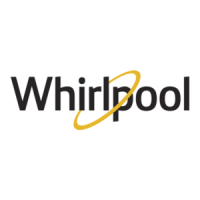




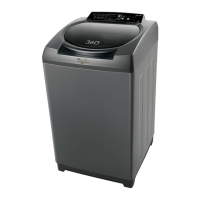

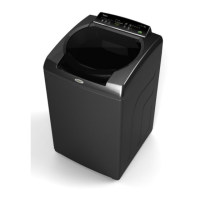

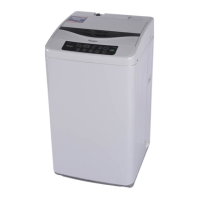
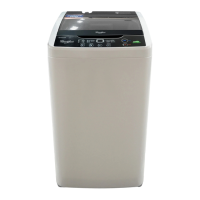

